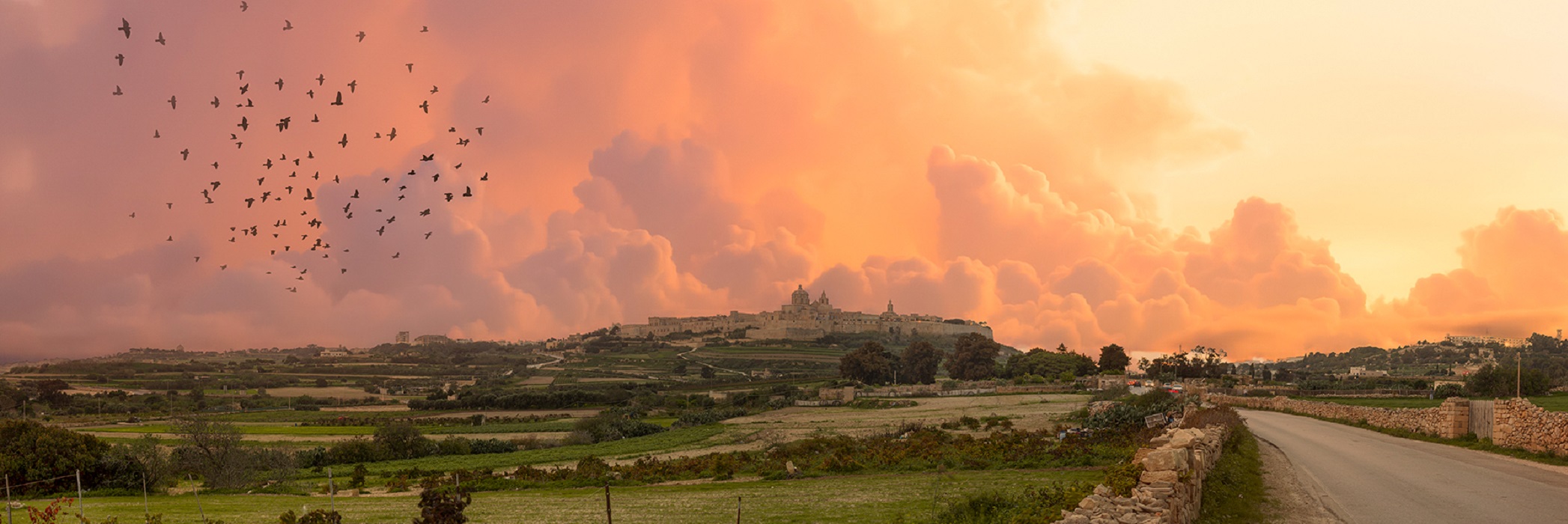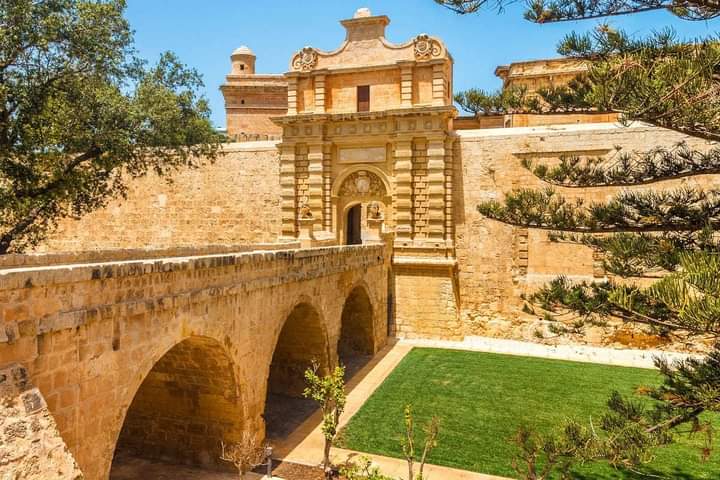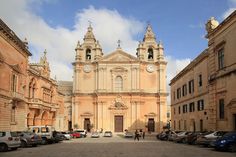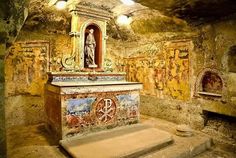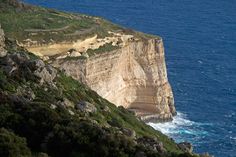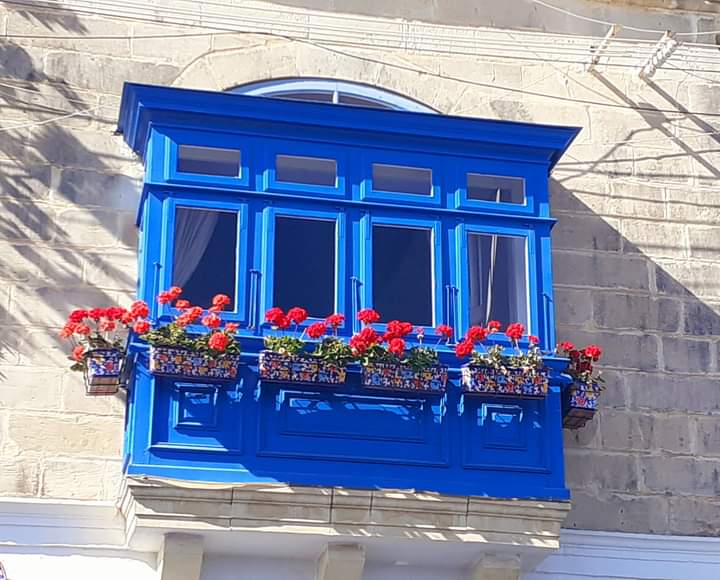Mdina – Citta` Vecchia - The Silent City
MDINA, also known by its titles ‘Citta Vecchia’ or ‘Citta Nobile’, was founded as MALETH in around 870 B.C. by Phoenician settlers. It was later renamed MELITE by the Romans. During the Byzantine Period or the Arab occupation of Malta, the city adopted its present name, which derives from the Arab word MEDINA. It was here that, according to tradition, in 60 A.D. the Apostle St. Paul is said to have lived after being shipwrecked on the Islands.
MDINA is a fortified City built in the Northern Region of Malta, that served as the island’s capital from antiquity to the Medieval Period, until the arrival of the Order of St. John in 1530. It was then that Borgo became the Administrative Centre. The city remained the centre of the Maltese Nobility and Religious authorities, but it never regained its pre-1530 importance, giving rise to the popular nick name, the ‘Silent City’ by both locals and visitors. Today the city has a population of 250 inhabitants.
MDINA is still home to some of Malta’s Noble families, some of which are descendants of the Norman, Sicilian and Spanish overlords who made MDINA their home from the 12th Century onwards. Impressive Palaces line its narrow & shady streets, it is one of Europe’s first examples of an ancient walled city and extraordinary in its mix of medieval and baroque architecture.
Apart from the many palaces, the city also has the Museum of Natural History, housed in Palazzo Vilhena, a French Baroque Palace rebuilt in 1726 by Grand Master Antonio Manoel de Vilhena to designs of Charles Francois de Mondion. A Cathedral Museum; the Dungeons; Mdina Experience; St. Paul’s Cathedral and Banca Giuratale (also known as the Municipal Palace) where the Universita’ found its new seat after Grand Master De Vilhena confiscated the original Ministerial Palace for his own use.
Mdina is situated high above terraced fields thus dominating the rural skyline. Many people visit this magnificent city every year, around 1.5 million of them are tourists. Mdina contributes greatly to the glorious heritage of the Maltese islands with its original setting of Baroque Palaces and Churches, so it deserves every degree of protection possible to ensure its survival for the benefits of both future generations and National Pride.
St Paul`s Cathedral
According to tradition, the site of the Mdina Cathedral was originally occupied by a palace belonging to Saint Publius, the Roman Governor of Melite, who greeted Paul the Apostle after he was shipwrecked in Malta. According to the Acts of the Apostles, Paul cured Publius` father and many other sick people on the island. Though there are remains of a Roman domus in the present crypt, and the tradition is a commonly believed legend, the version of the event is not supported by archaeologists or historians. It is considered as part of a collection of Pauline mythologies in Malta.
The first Cathedral which stood on the site is said to have been dedicated to the Blessed Virgin Mary, but it fell into disrepair during the Arab period. The Churches in Melite were looted after the Aghlabid invasion in 870 A.D. During the Arab times, as revealed by excavations, the site was used as a mosque.
Following the Norman invasion in 1091 A.D, Christianity was re-established as the dominant religion in the Maltese Islands. A Cathedral dedicated to St Paul was built in the 12th and 13th centuries. The Cathedral was built in the Gothic and Romanesque styles, and it was enlarged and modified several times.
St Paul`s Catacombs
St. Paul`s Catacombs are part of a large cemetery once located outside the walls of the ancient Roman city of Melite, now covered by the smaller Mdina and Rabat. It also comprises the catacombs of St. Agatha, San Katald, St. Augustine and many others.
The cemetery probably originated in the Phoenician-Punic period. As in Roman tradition, Phoenician and Punic burials were located outside city walls. The many tombs discovered in areas outside the known line of the Roman city suggest that the city of Melite was close to equal size.
The early tombs consisted of a deep rectangular shaft with one or two chambers dug from its sides. This type of burial was used well into the Roman occupation of the islands, but the chambers grew larger and more regular in shape over time. It is probable that this enlargement joined neighbouring tombs and led to the creation of small catacombs, which became the norm by the fourth century A.D.
The catacombs were in use till the seventh, possibly eighth century. Some of the catacombs were used again during the re-Christianisation of the Island around the 13th century.
Buskett Gardens & Woodlands
The gardens know their origins at least since the post-Roman Republic period and in which sexual celebrations in honour of their gods were traditional. When Eastern Christianity took root in Malta, this pagan feast was replaced by the Christian celebrations of St. Peter and St. Paul.
Indigenous forests once covered Malta, but trees were cut down for shipbuilding in the era when galleons plied the Mediterranean waters and for agricultural purposes. Buskett Gardens were planted by the Knights Hospitalier as a hunting reserve.
In June 1557, Grand Master Claude de La Sengle retreated to Buskett when his health began to deteriorate, and died in Mdina two months later.
Dingli Cliffs
Dingli is part of the highest land mass in Malta, some 200 metres above sea level, with the Parish Dome dominating the skyline. It is quaint village where its edges, the cliffs, make a perpendicular plunge into the Mediterranean Sea, hundreds of metres below sea level. The cliffs stretch for a few kilometres with some sharp edges and with a flat cliff face and an occasional cavern, other cliffs descend in a sloping terrain to the water.
This segment of the cliffs exhibits all the geological layers of Malta’s sedimentary rock, sloping one on top of the other. Despite the harsh terrain on narrow contours, agriculture has taken place for several centuries and halted only when in fear of pirate assaults. Some caves on the edges and on the cliff face served as hideaways for the same purpose. The farmers used to climb or descend into the caves by means of ladders, pull them in during the night and disguise the entrance with rubble walls or tree branches. Some with easier access were permanently inhabited and later used as shelters for herds.
The view from this area includes the islet of Filfla – a nature reserve – that contains faunal and floral endemic species. Up to a few years ago, this islet was a shooting target for the British Military to test the accuracy of its equipment and to train personnel. The size of Filfla was reduced drastically through this practice.


